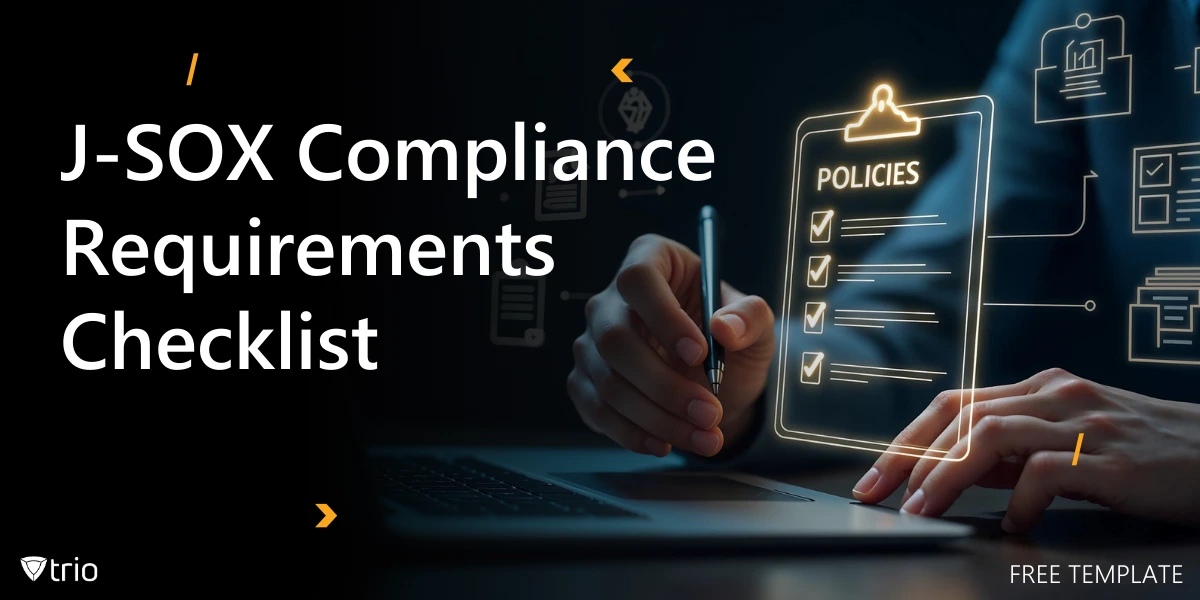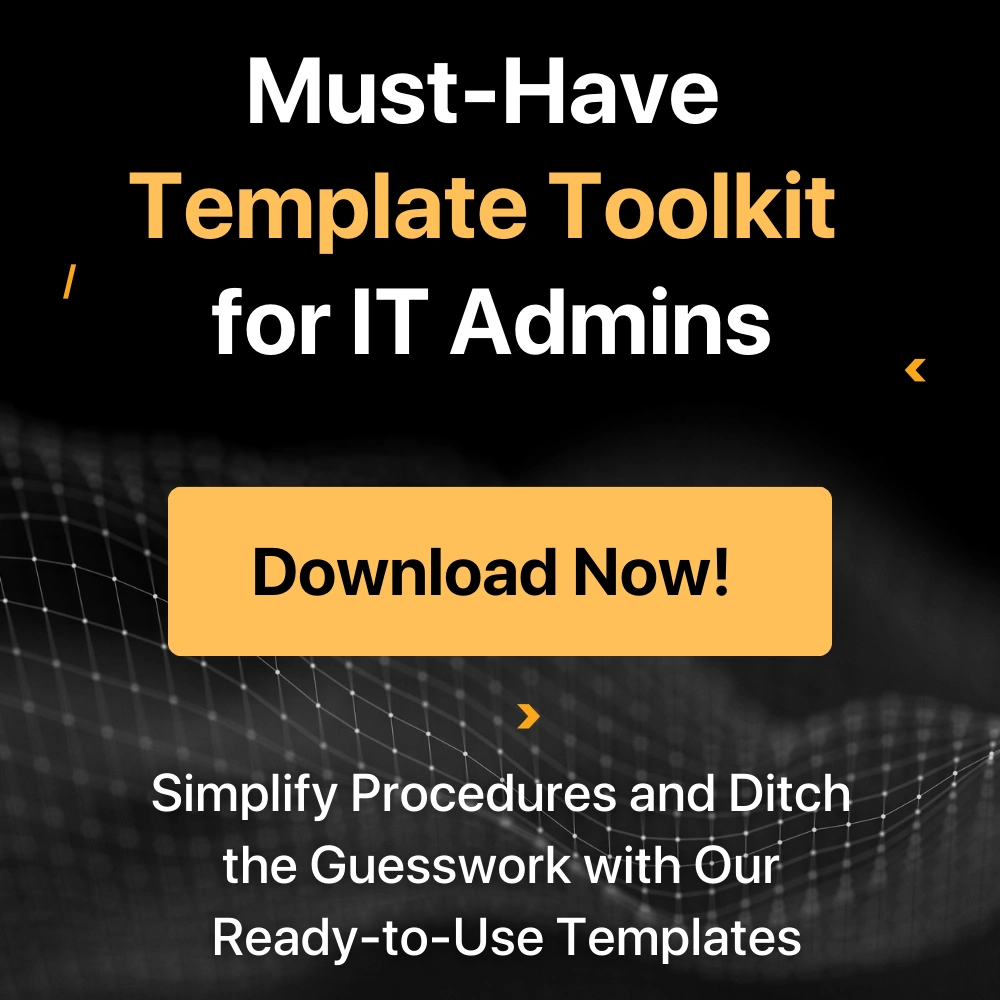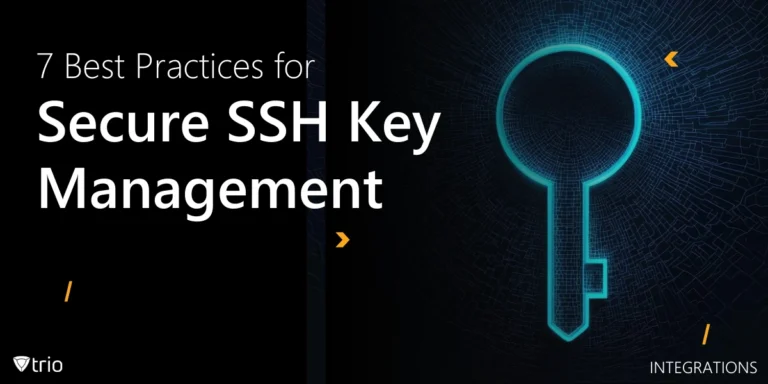J-SOX compliance is a crucial regulatory framework designed to enhance corporate governance, financial transparency, and risk management for publicly listed companies in Japan. As businesses navigate the complexities of J-SOX requirements, they must implement strong internal controls, conduct thorough risk assessments, and ensure IT security to maintain compliance. Unlike other financial regulations, J-SOX places significant emphasis on IT governance, making it essential for organizations to integrate advanced compliance management solutions. This checklist provides a structured approach to achieving J-SOX compliance, covering everything from internal audits to continuous monitoring.
1. Understanding J-SOX Compliance and Its Importance
The Japanese Sarbanes-Oxley Act (J-SOX) was enacted in Japan’s Financial Instruments and Exchange Law in response to corporate scandals, aiming to improve financial transparency and internal controls for publicly traded companies in Japan. Modeled after the U.S. Sarbanes-Oxley (SOX) Act, J-SOX imposes strict auditing and reporting requirements to ensure the accuracy and reliability of financial statements. Compliance is mandatory for companies listed on the Tokyo Stock Exchange and their subsidiaries.
J-SOX compliance is critical for businesses operating in Japan, as non-compliance can lead to legal penalties, financial losses, and reputational damage. Companies must establish strong internal control frameworks, document financial processes, and conduct regular risk assessments. Unlike U.S. SOX, J-SOX places greater emphasis on IT controls and the role of technology in financial reporting.
To achieve compliance, organizations must integrate J-SOX requirements into their corporate governance strategies. This includes defining accountability structures, training employees on compliance policies, and implementing technologies that enhance audit transparency. Ensuring adherence to J-SOX standards not only mitigates regulatory risks but also strengthens investor confidence and business credibility.
2. Establishing Internal Control Frameworks
A robust internal control framework is the foundation of J-SOX compliance. Companies must adopt frameworks like COSO (Committee of Sponsoring Organizations) to structure their financial processes. This includes defining internal roles, responsibilities, and procedures that ensure the accuracy and completeness of financial records.
J-SOX categorizes internal controls into four key areas: financial reporting, operational processes, IT systems, and legal compliance. Each of these areas must be assessed to identify risks, implement controls, and regularly evaluate their effectiveness. Organizations should create process flowcharts, risk matrices, and control documentation to establish a structured approach to compliance.
Regular internal audits are essential to maintaining control integrity. Businesses should assign compliance officers or independent auditors to review controls periodically. A well-designed internal control framework ensures financial transparency, minimizes errors, and strengthens corporate governance.
3. Conducting Risk Assessments and Evaluations
Risk assessments help companies identify potential vulnerabilities in financial reporting and business operations. J-SOX requires organizations to perform annual risk assessments, ensuring that controls are aligned with current financial and operational risks. These evaluations should focus on fraud detection, operational inefficiencies, and IT security weaknesses.
A structured risk assessment includes categorizing risks based on their likelihood and impact. Companies should prioritize high-risk areas, such as revenue recognition, asset management, and third-party transactions. IT-related risks, including data breaches and system failures, must also be assessed to prevent financial misstatements caused by technological disruptions.
Once risks are identified, businesses must implement mitigation strategies, such as access controls, automated monitoring tools, and fraud prevention mechanisms. Continuous improvement through feedback loops and periodic assessments ensures that controls remain effective against emerging risks.

4. IT Controls and Data Security
IT controls are a major focus of J-SOX compliance due to their role in financial data integrity. Companies must establish security measures that protect financial systems from unauthorized access, data manipulation, and cyber threats. IT general controls (ITGCs) include user authentication, encryption, system monitoring, and data backup policies.
J-SOX mandates strict change management processes for IT systems to prevent unauthorized modifications. Any updates to financial applications or databases must be documented, tested, and approved before deployment. This ensures that changes do not introduce security vulnerabilities or compromise data accuracy.
Regular system audits and penetration testing help organizations identify security gaps and ensure compliance with IT governance policies. Businesses should implement Identity and Access Management (IAM) solutions, endpoint protection, and network monitoring tools to safeguard financial data. A strong IT control framework enhances data security and ensures the reliability of financial reporting.
5. Documentation and Reporting Requirements
J-SOX requires companies to maintain detailed documentation of financial transactions, internal controls, and audit findings. Proper documentation ensures compliance and provides transparency during external audits. Businesses must establish standardized procedures for recording financial data, tracking control effectiveness, and maintaining historical records.
Organizations must prepare internal control reports that outline control objectives, risk assessments, and remediation measures. These reports must be submitted annually to auditors and regulators for review. Documentation should be stored securely and made accessible to authorized personnel to support compliance efforts.
Automated compliance management tools can streamline documentation processes by tracking financial records and generating audit-ready reports. Implementing document management systems reduces human errors, enhances collaboration between compliance teams, and simplifies regulatory reporting.
6. Employee Training and Compliance Awareness
Training employees on J-SOX requirements is essential for building a compliance-focused culture. All staff members involved in financial reporting, IT security, and internal audits should undergo regular training to stay updated on compliance best practices and regulatory changes.
Organizations should conduct workshops, online courses, and compliance simulations to educate employees about their roles in maintaining J-SOX compliance. Training should cover topics such as financial fraud prevention, cybersecurity awareness, and proper documentation procedures. Employees must understand how to report compliance violations and contribute to risk mitigation strategies.
A well-trained workforce strengthens internal controls and reduces the likelihood of compliance failures. Companies should track employee participation in training programs and assess their understanding through periodic assessments. Continuous education ensures that employees remain vigilant in upholding J-SOX standards.
7. External Audits and Compliance Reviews
External audits play a crucial role in verifying J-SOX compliance. Companies must engage independent auditors to assess their internal controls, financial statements, and risk management practices. These audits help identify compliance gaps and provide recommendations for improving financial governance.
Auditors review financial records, IT controls, and operational processes to ensure they align with J-SOX requirements. They may conduct interviews with employees, test security controls, and analyze transaction histories to detect inconsistencies or fraud risks. Organizations should proactively address audit findings to enhance compliance readiness.
To prepare for external audits, companies should conduct internal pre-audits to identify and resolve potential issues beforehand. Maintaining a well-organized compliance structure and collaborating with auditors ensures a smoother audit process and reduces the risk of regulatory penalties.
8. Continuous Monitoring and Improvement
J-SOX compliance is not a one-time effort—it requires continuous monitoring and improvement. Companies must establish compliance monitoring teams to oversee financial controls, conduct routine assessments, and ensure ongoing adherence to regulations.
Using automated monitoring solutions, businesses can track compliance metrics, detect anomalies in financial reporting, and generate real-time compliance dashboards. Continuous improvement strategies involve updating policies, refining control mechanisms, and integrating new technologies to enhance financial transparency.
Organizations should encourage feedback from employees and auditors to strengthen compliance initiatives. Regularly reviewing compliance policies and adapting to regulatory changes ensures that businesses stay ahead of evolving J-SOX requirements.
Download Our Free J-SOX Compliance Requirements Checklist
J-SOX compliance is a critical requirement for businesses operating in Japan, ensuring financial transparency, risk management, and corporate integrity. Use this checklist to cover all responsibilities regarding J-SOX compliance:
By implementing a structured approach—covering internal controls, risk assessments, IT security, documentation, and employee training—organizations can effectively navigate compliance challenges. Regular audits, continuous monitoring, and leveraging automation tools help businesses maintain J-SOX adherence while enhancing operational efficiency. Prioritizing compliance not only mitigates regulatory risks but also fosters trust among investors, stakeholders, and customers.
Ensuring J-SOX compliance can be challenging without the right tools. Trio’s Mobile Device Management solution simplifies the process with robust internal control management, automated risk assessments, and real-time compliance monitoring. Protect your business, enhance financial transparency, and stay audit-ready with Trio. Try out Trio’s free trial today!
Get Ahead of the Curve
Every organization today needs a solution to automate time-consuming tasks and strengthen security.
Without the right tools, manual processes drain resources and leave gaps in protection. Trio MDM is designed to solve this problem, automating key tasks, boosting security, and ensuring compliance with ease.
Don't let inefficiencies hold you back. Learn how Trio MDM can revolutionize your IT operations or request a free trial today!




